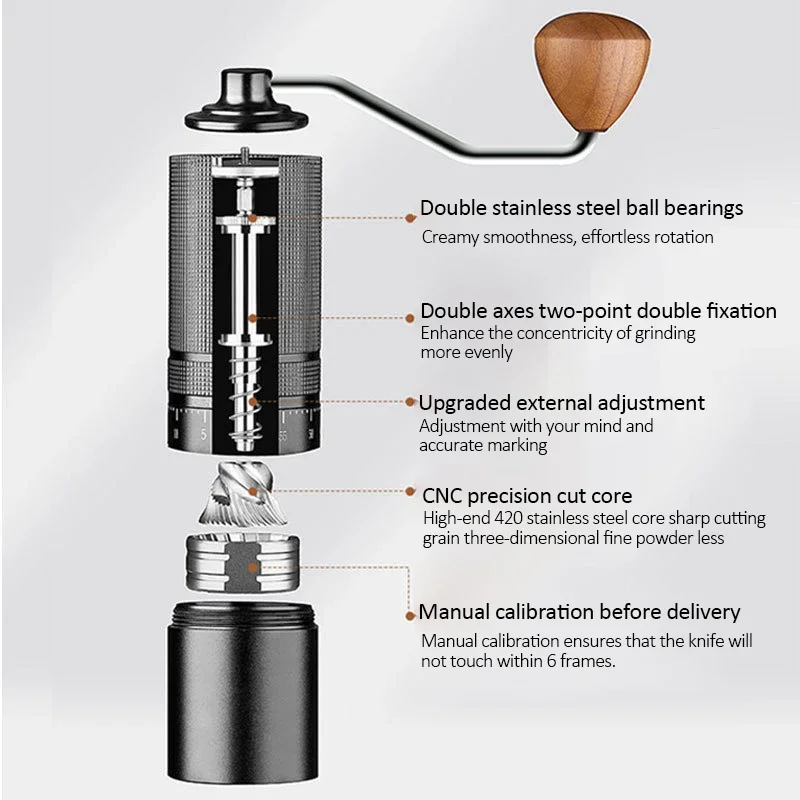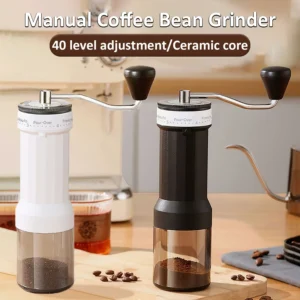Understanding Coffee Grinder Burrs: The Foundation of Your Perfect Brew
Coffee grinder burrs are the heart of any quality coffee grinder, responsible for crushing and grinding coffee beans into consistent particles. Unlike blade grinders that chop beans haphazardly, burrs work by crushing beans between two surfaces with precision—one stationary and one rotating—resulting in uniform coffee grounds that extract evenly during brewing.
The material of these burrs plays a crucial role in determining not only how long your grinder will last, but also the quality of your daily brew. Burr material affects everything from grind consistency and heat generation to flavor extraction and maintenance requirements. The two primary materials used in quality burr grinders are ceramic and steel, each with distinct characteristics that influence performance.
Understanding the ceramic vs steel burr coffee grinders mechanism differences is essential for coffee enthusiasts seeking the perfect cup. The interaction between burr geometry and material properties directly impacts how your beans are ground, which ultimately shapes the flavor in your cup. Whether you’re an occasional brewer or a dedicated coffee aficionado, the burrs in your grinder form the foundation upon which all your coffee experiences are built.
Ceramic vs. Steel Burrs: A Comprehensive Durability Analysis
When comparing ceramic and steel burrs, durability isn’t as straightforward as declaring one superior to the other. Each material offers distinct advantages and limitations that must be considered alongside your specific coffee habits and needs.
Ceramic burrs generally outlast standard steel burrs in terms of edge retention and wear resistance. While ceramic burrs typically process between 750-1500 pounds of coffee before needing replacement, standard steel burrs generally handle 500-1000 pounds before showing significant wear. However, these figures vary widely based on several factors:
- Quality of the burr material and manufacturing
- Type of coffee beans being ground (light vs. dark roast)
- Grinding frequency and volume
- Maintenance habits and cleaning frequency
- Presence of foreign objects during grinding
Understanding ceramic steel burr longevity guide specifics helps determine which material might better suit your brewing style. Remember that durability represents just one aspect of performance—the ideal burr material balances longevity with grind quality, heat management, and resilience to create the best overall coffee experience.
Ceramic Burrs: When Hardness Meets Longevity
Ceramic burrs are typically made from zirconium oxide, an extremely hard material that registers around 8.5 on the Mohs hardness scale (compared to steel at approximately 5-6). This exceptional hardness translates to remarkable edge retention and wear resistance, allowing ceramic burrs to maintain their sharp cutting surfaces through hundreds—sometimes thousands—of pounds of coffee.
For the average home user, ceramic burrs can last 10-15 years before showing significant signs of wear, particularly when properly maintained. Their exceptional longevity comes from their ability to maintain sharp edges even after repeated use. While ceramic burrs may not feel as sharp as new steel burrs initially, they maintain their cutting efficiency much longer without dulling.
One significant advantage of ceramic burrs is their thermal properties. With considerably less heat retention steel vs ceramic burrs, ceramic options generate minimal heat during the grinding process. This matters because excessive heat can prematurely extract volatile compounds from coffee beans, potentially altering flavor and aroma profiles before brewing even begins.
The cooler grinding temperature helps preserve the delicate flavor compounds in your beans, ensuring that subtle notes aren’t lost before you’ve even finished grinding. Many enthusiasts particularly appreciate this quality when preparing lighter roasts with bright, complex flavors that can be diminished by heat.
Popular manual grinders featuring ceramic burrs include many entry and mid-range options focused on delivering consistent performance without the heat buildup common to steel alternatives. These ceramic burr coffee grinder options provide excellent value given their longevity and cool grinding properties.
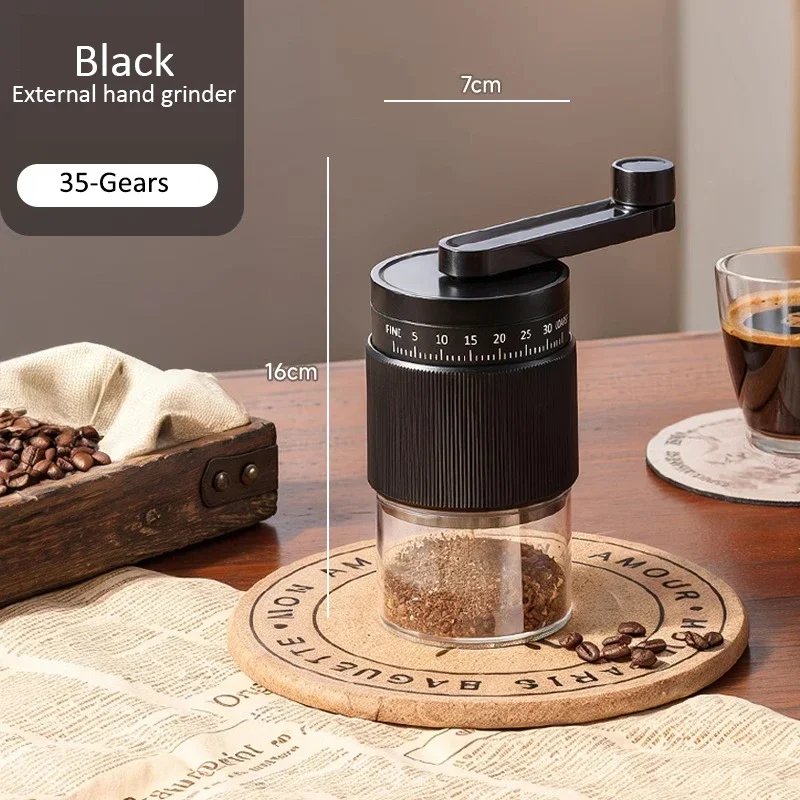
The Achilles’ Heel: Fragility Concerns with Ceramic Burrs
Despite their impressive wear resistance, ceramic burrs have one significant vulnerability: brittleness. Unlike steel burrs that can flex slightly under pressure, ceramic burrs are prone to chipping or cracking when they encounter unexpected hard objects.
Foreign objects commonly found in coffee beans include:
* Small stones or pebbles from harvest processing
* Hardened twigs or plant matter
* Occasional metal fragments from processing equipment
When these contaminants enter the grinding chamber, they can cause significant damage to ceramic burrs. Even a single small stone can chip a ceramic burr’s edge, potentially compromising grind consistency or requiring complete replacement. This vulnerability is particularly concerning for those using unscreened or less thoroughly processed coffee beans.
For careful home users who inspect their beans before grinding, this fragility concern may be somewhat overblown. Many owners of ceramic burr coffee grinder models report years of trouble-free operation. Nevertheless, this inherent brittleness represents the primary durability concern for ceramic burrs and explains why many commercial establishments prefer steel alternatives despite ceramic’s superior wear resistance.
Steel Burrs: Balancing Resilience and Wear Rate
Steel burrs, typically crafted from hardened stainless steel alloys, offer exceptional toughness and resilience. While standard steel burrs may not match ceramic’s longevity in pure edge retention, they excel in handling the unpredictable nature of coffee grinding with significantly less risk of catastrophic failure.
The molecular structure of steel allows these burrs to withstand impacts that would crack ceramic equivalents. When encountering foreign objects like small stones, steel burrs may develop small dents or scratches but will usually continue functioning effectively. This resilience makes steel burrs particularly suited to environments where bean quality cannot be meticulously controlled or for users who prefer minimal inspection before grinding.
Steel burrs typically process around 500-600 pounds of coffee before showing significant wear signs, though premium steel variants can extend this considerably. For typical home users, this translates to approximately 5-10 years of service before replacement becomes necessary, depending on usage frequency and bean types.
The initial sharpness of quality steel burrs often exceeds that of ceramic equivalents, allowing them to cut through beans with exceptional precision when new. This characteristic makes manual coffee burr grinders with steel burrs particularly effective for achieving consistently even particle size across various grind settings.
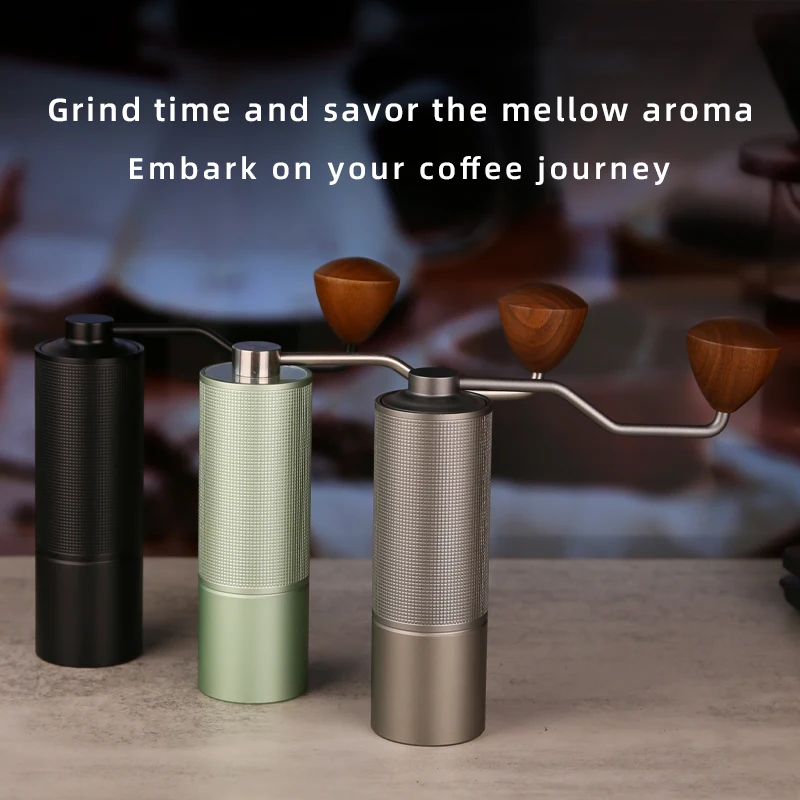
Advanced Steel Technologies: Coatings and Alloys
The landscape of steel burrs has evolved significantly with the introduction of specialized coatings and premium alloys that dramatically extend longevity while enhancing performance. These advancements narrow—and sometimes eliminate—the durability gap between steel and ceramic options.
Titanium Nitride (TiN) coating, a gold-colored surface treatment, increases surface hardness dramatically while reducing friction. This technology can extend steel burr lifespan by 3-5 times compared to standard steel, approaching or exceeding ceramic durability while maintaining steel’s inherent impact resistance. Similarly, Diamond-Like Carbon (DLC) coatings provide exceptional hardness and wear resistance while offering superior smoothness that reduces grinding resistance.
High-end stainless steel manual coffee grinders featuring these advanced technologies represent a significant investment initially but deliver exceptional value through extended lifespan and superior performance. The cost premium for these coated burrs typically ranges from 30-100% over standard steel options but can provide years of additional service life.
These advanced steel technologies are increasingly common in premium home grinders and commercial equipment where maximum performance and longevity are essential. For serious coffee enthusiasts, these coated steel burrs often represent an optimal balance between ceramic’s edge retention and steel’s resilience.
Beyond Lifespan: Performance Factors That Matter
While durability rightfully commands attention when comparing burr materials, several other performance factors significantly impact your daily brewing experience and should weigh heavily in your selection process.
| Performance Factor | Ceramic Burrs | Steel Burrs |
|---|---|---|
| Grind Consistency | Excellent for fine grinds; Can be less uniform for coarser settings | Highly consistent across all grind sizes; Superior for coarse grinding |
| Heat Generation | Minimal heat transfer; Preserves volatile compounds | Greater heat generation; Can affect delicate flavors |
| Noise Level | Generally quieter operation | Often louder, especially in manual grinders |
| Grind Speed | Slower grinding, requires more effort | Faster cutting through beans, less effort required |
| Adjustment Precision | Less sensitive to minor adjustments | Typically offers more precise adjustment range |
Grind consistency directly impacts extraction quality—uneven particles extract at different rates, potentially creating both under and over-extracted flavors in the same brew. While both materials can achieve excellent consistency when properly manufactured, steel burrs generally maintain more uniform particle distribution, especially for coarser grinds used in brewing methods like French press or cold brew.
Understanding how coffee flavor ceramic steel burrs interact reveals why some enthusiasts strongly prefer one material over the other. Heat-sensitive light roasts often benefit from ceramic’s cooler grinding process, while darker roasts—which are more forgiving of thermal changes—may benefit more from steel’s precision cutting ability.
The Cost Equation: Initial Investment vs. Long-Term Value
When evaluating ceramic versus steel burrs from a financial perspective, several factors influence the total cost of ownership beyond just the initial purchase price.
Entry-level hand burr grinder models with ceramic burrs typically range from $25-60, while comparable steel burr models often start at $70-100. This price gap narrows and sometimes reverses in high-end models, where sophisticated steel alloys and manufacturing techniques can drive premium pricing.
Consider these costs over the lifespan of your grinder:
* Initial purchase price
* Expected lifespan before replacement needs
* Replacement burr costs (if available separately)
* Volume of coffee typically ground
For casual coffee drinkers processing 1-2 pounds monthly, even standard steel burrs may last 8-10 years before showing significant wear. At this usage level, either material offers excellent value. For heavy users grinding 5+ pounds monthly, ceramic’s extended longevity can provide significant savings despite potentially higher initial costs.
The most cost-effective option depends on your specific usage patterns and preferences. For those grinding primarily light roasts for espresso or Turkish coffee, ceramic’s cool grinding and longevity often justify any premium. For those favoring medium to dark roasts for various brewing methods, steel’s versatility and resilience may provide better overall value despite potentially shorter lifespan.
Hand Burr Grinder, Hand Crank Coffee Grinder, Manual Espresso Grinder, Portable Coffee Grinder
Price range: $262.72 through $300.22 Select options This product has multiple variants. The options may be chosen on the product pageManual Burr Mill, Manual Coffee Grinder Stainless Steel, Manual Coffee Mill Grinder, Mechanical Coffee Grinder
Price range: $127.26 through $130.32 Select options This product has multiple variants. The options may be chosen on the product pageHand Burr Grinder, Manual Coffee Grinder Stainless Steel, Precision Manual Grinder
Price range: $183.64 through $187.52 Select options This product has multiple variants. The options may be chosen on the product pageCeramic Burr Coffee Grinder, Hand Burr Grinder, Hand Crank Coffee Grinder, Manual Coffee Bean Grinder
Price range: $59.17 through $59.96 Select options This product has multiple variants. The options may be chosen on the product page
What Accelerates Burr Wear? Key Factors to Consider
Understanding what causes burrs to wear helps extend their useful life regardless of material choice. Several key factors significantly impact how quickly your grinder burrs will deteriorate:
Bean Hardness: Light roasted beans are significantly harder than dark roasts and cause more wear on burrs. Lighter roasts register around 6-7 on the Mohs hardness scale compared to 4-5 for dark roasts, creating substantially different wear patterns over time.
Grinding Volume and Frequency: The more beans you process, the faster wear occurs. Commercial environments grinding pounds daily experience accelerated wear compared to home users grinding weekly.
Grind Size Setting: Finer settings create more friction between burrs, generating more heat and mechanical wear. Espresso grinding accelerates wear compared to coarser settings for brewing methods like pour-over or French press.
Cleaning Habits: Coffee oils and residue build up on burrs over time. This residue can accelerate wear by increasing friction and can harbor compounds that degrade burr surfaces. Regular cleaning significantly extends burr life.
Foreign Material: Small stones, twigs or other contaminants create immediate damage to burr surfaces. Careful inspection of beans before grinding helps prevent this common cause of premature wear.
Maximizing lifespan manual coffee grinder practices involve addressing each of these factors. Simple habits like storing beans properly, cleaning regularly, and being mindful of grind settings can substantially extend your grinder’s useful life.
Recognizing Worn Burrs: Signs It’s Time for Replacement
Even the highest quality burrs eventually require replacement. Recognizing the signs of wear helps maintain optimal coffee quality and prevents the frustration of inconsistent brewing results.
Look for these key indicators that your burrs need attention:
- Visual Indicators: Visible flattening or dulling of cutting edges, chips or cracks (especially in ceramic burrs), or significant discoloration beyond normal patina
- Grind Consistency Changes: Noticeably more “fines” (dust-like particles) mixed with larger chunks, visible to the naked eye
- Extended Grinding Time: Significantly longer grinding duration for the same quantity of beans
- Unusual Sounds: New or different grinding noises, especially higher-pitched sounds or grinding that sounds less “crisp”
- Heat Generation: Noticeably warmer grounds than usual after grinding
- Extraction Problems: Inconsistent brewing results despite maintaining your usual process
The most reliable test involves checking ground consistency. Rub a small amount of grounds between your fingers—worn burrs produce noticeably more fine dust alongside larger particles, creating an uneven texture. This inconsistency directly impacts extraction, causing some coffee to over-extract (creating bitterness) while other portions under-extract (creating sourness or lack of flavor).
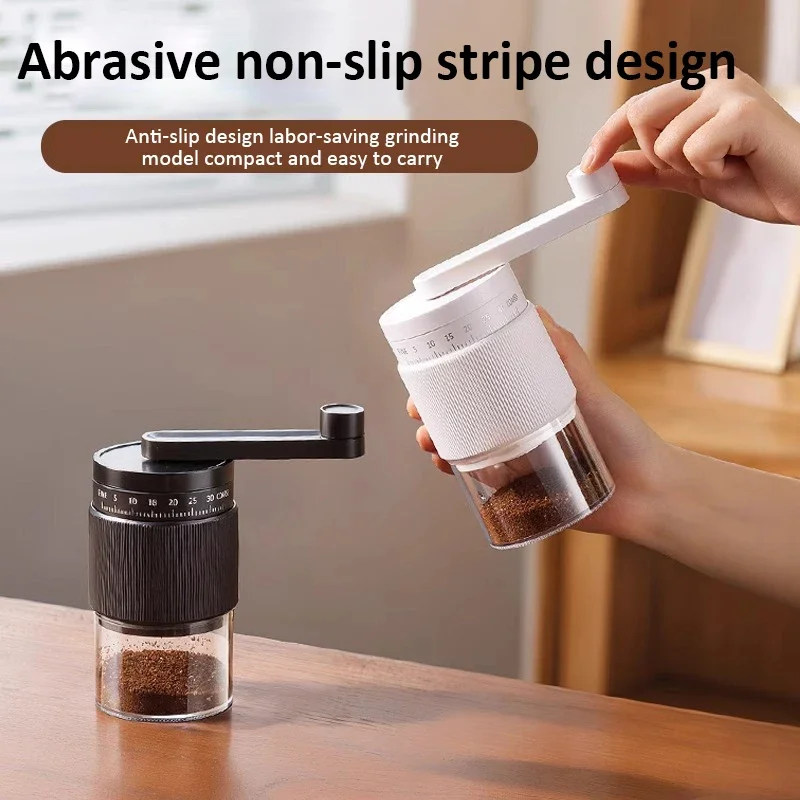
Maximizing Burr Lifespan: Essential Maintenance Practices
Proper maintenance significantly extends burr life regardless of material choice. Follow these essential practices to maximize your grinder’s performance and longevity:
Regular Cleaning Schedule:
* For daily users: Deep clean monthly
* For weekly users: Deep clean quarterly
* For occasional users: Clean after extended periods of non-use
Safe Cleaning Methods:
1. Disassemble according to manufacturer instructions
2. Use a soft brush (old toothbrush works well) to remove coffee particles
3. For ceramic burrs: Avoid immersion in water; use dry cleaning methods
4. For steel burrs: Use grinder cleaning tablets (like Urnex Grindz) quarterly
5. Reassemble carefully, ensuring proper alignment
Preventative Measures:
* Store beans in airtight containers away from moisture
* Sort beans before grinding to remove foreign objects
* Avoid grinding extremely oily beans that can clog burr channels
* Follow manufacturer recommendations for appropriate bean types
The definitive guide coffee grinder burr size explains how proper maintenance should be adapted based on your specific grinder configuration. Regular maintenance not only extends burr life but also ensures consistent grind quality throughout the grinder’s lifespan.
Can You Sharpen Coffee Grinder Burrs?
Many coffee enthusiasts wonder if dulled burrs can be restored rather than replaced. While technically possible in some cases, burr sharpening presents significant practical challenges for most home users.
Coffee grinder burrs require precise geometry to function properly. Unlike kitchen knives, which need only a sharp edge, burrs depend on exact angles and spacing between cutting surfaces to produce consistent ground size. DIY sharpening typically compromises this precision, potentially worsening grind quality rather than improving it.
Professional restoration services exist primarily for commercial equipment with expensive, large burr sets where replacement costs are substantial. These services use specialized equipment to restore burr geometry within professional tolerances. For most consumer grinders, the cost of professional sharpening often approaches or exceeds replacement burr costs.
For grinders with manual coffee grinders replaceable burrs, replacement represents the most reliable solution when performance declines. Quality manufacturers design replacement burrs to match original specifications precisely, ensuring consistent performance without the uncertainties of restoration attempts.
Making Your Choice: Matching Burr Material to Your Brewing Style
Selecting the ideal burr material depends heavily on your specific brewing preferences, usage patterns, and priorities. Consider these profiles to identify which material might better suit your needs:
Espresso Enthusiast:
Ceramic burrs often excel for dedicated espresso brewing due to their thermal properties and fine grind consistency. The ultimate guide burr materials espresso highlights how ceramic’s cool grinding helps preserve volatile compounds critical to crema formation and flavor complexity. However, premium coated steel burrs are increasingly popular among espresso aficionados for their precision and durability.
Multi-Method Brewer:
If you regularly switch between brewing methods (pour-over, French press, AeroPress, etc.), steel burrs typically offer better versatility. Their consistent performance across various grind sizes provides the flexibility needed for different extraction methods.
High-Volume User:
For households grinding large quantities of coffee or small offices, coated steel burrs typically offer the best balance of performance and durability. Their resistance to both wear and impact damage makes them ideal for environments where multiple users might operate the grinder.
Flavor Purist:
If preserving subtle flavor notes is your highest priority, ceramic burrs’ minimal heat generation gives them a slight edge, particularly for light roasts with delicate flavor compounds. The thermal neutrality helps ensure that what you taste comes from your brewing method, not from alterations during grinding.
Are Ceramic or Steel Burrs Better for Hand Grinders?
Manual grinders present unique considerations when choosing between ceramic and steel burrs. Since hand grinding requires physical effort, the efficiency of the cutting surfaces becomes particularly important.
Steel burrs typically offer smoother operation in manual grinders, requiring less effort to achieve the same grind. Their sharper initial cutting edges slice through beans more efficiently, reducing the force needed for each rotation. This efficiency difference becomes particularly noticeable when grinding finer settings for espresso or Turkish coffee.
Ceramic burrs in manual grinders generally require more effort but offer advantages for travelers and those concerned about weight. The ceramic vs steel burr comparison reveals that ceramic options tend to be lighter and more compact, making them popular in travel-focused manual grinders where every ounce matters.
For daily manual grinding, many users find the reduced effort of steel burrs outweighs their potential shorter lifespan. However, for occasional manual grinding or travel use, ceramic’s lighter weight and durability without maintenance make it an excellent choice despite requiring slightly more physical exertion.
Does Burr Size Matter More Than Material?
While material choice significantly impacts grinder performance, burr size often plays an equally important—sometimes more important—role in determining grinding quality and speed.
Larger burrs offer several advantages regardless of material:
* Increased surface area for more efficient grinding
* Lower RPM requirements for the same output, generating less heat
* Improved particle size consistency, especially at coarser settings
* Reduced grinding time and effort
Professional grinders typically feature burrs 60-80mm in diameter compared to consumer models with 38-50mm burrs. This size difference dramatically impacts performance, often more significantly than material differences alone. Many coffee professionals argue that a larger set of steel burrs will outperform smaller ceramic burrs in both consistency and heat management despite ceramic’s inherent thermal advantages.
Understanding the best materials burrs characteristics helps balance these considerations. For many enthusiasts seeking to upgrade their coffee experience, increasing burr size often provides more noticeable improvements than changing materials. The ideal setup combines appropriate burr size with the material best suited to your specific brewing preferences.
In conclusion, both ceramic and steel burrs offer distinct advantages for coffee enthusiasts. Ceramic excels in longevity and cool grinding, while steel offers resilience and consistent performance across grind settings. Your ideal choice depends on your brewing preferences, maintenance habits, and performance priorities. At Savor Suite, we carefully select our manual grinder offerings to include exceptional examples of both materials, ensuring you can find the perfect match for your unique coffee journey.

